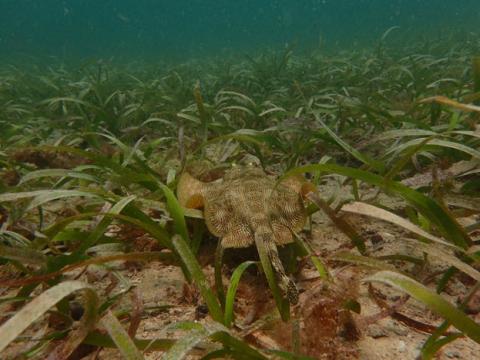Seagrasses
Seagrass meadows are underwater ecosystems composed of vascular plants that complete their life cycle in saline environments. In Colombia, they are located exclusively in the Caribbean, in shallow coastal areas, covering an estimated 148,171.34 hectares, mainly on the continental shelf of La Guajira. These ecosystems harbor a variety of species, the most common being Thalassia testudinum, Syringodium filiforme, Halodule wrightii and several of the genus Halophila. Their productivity is high due to associations with algae and other primary producers that increase nutrient uptake.
Ecosystem services provided by seagrass meadows include the provision of food for consumption and trade, as well as contributions to the gene pool of other ecosystems such as mangroves and coral reefs. They also regulate climate by sequestering atmospheric carbon, improve water quality by reducing the strength of currents and facilitating the settling of particles, control erosion by reducing the erosive force of waves, and protect against environmental hazards such as storms and gales. In addition, they provide cultural services related to recreational activities, tourism, and historical social cohesion.
Source: Evaluación nacional de biodiversidad y servicios ecosistémicos de Colombia

